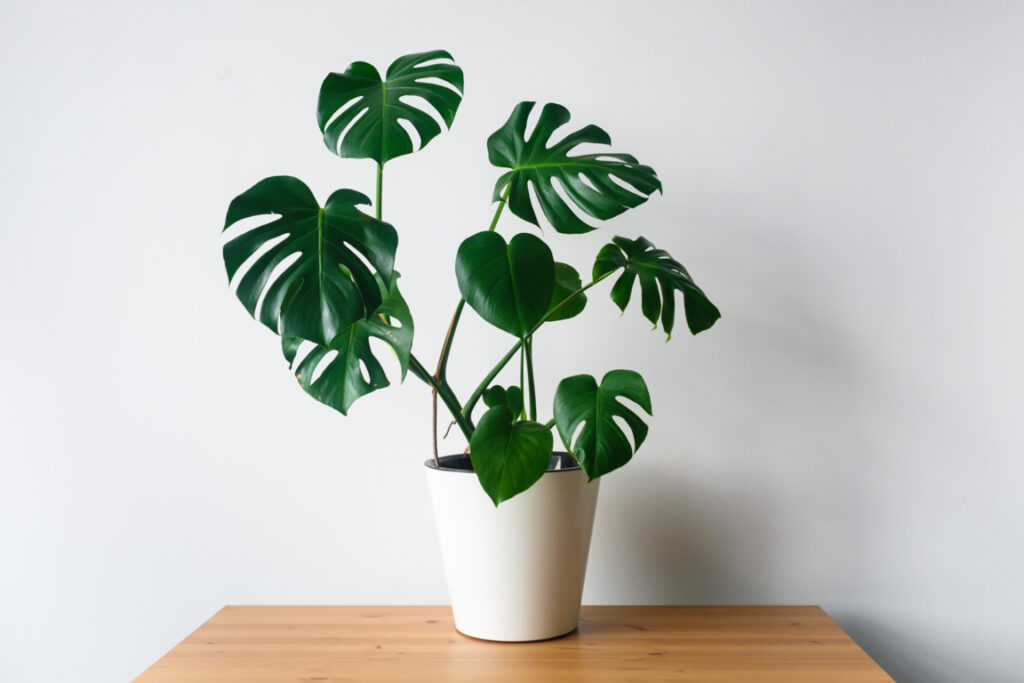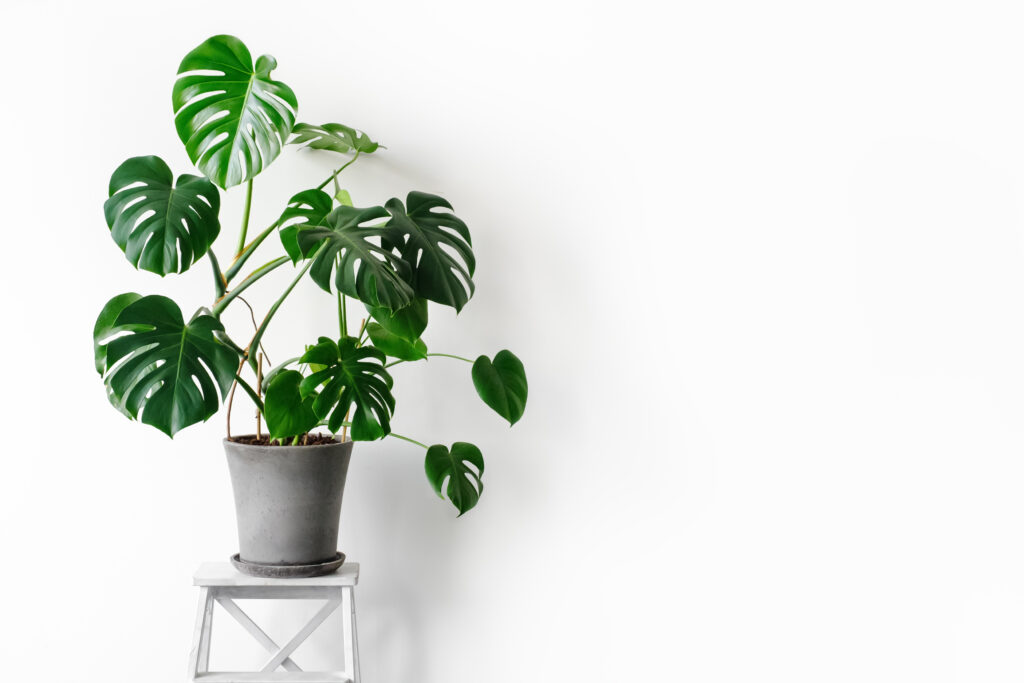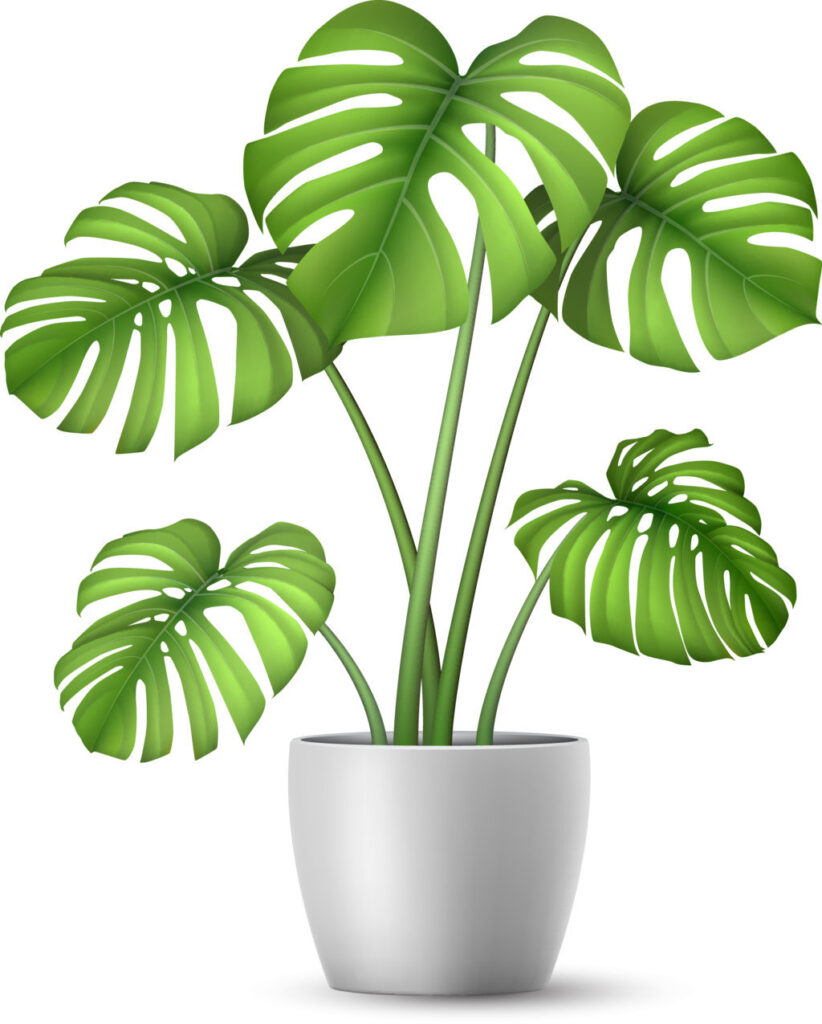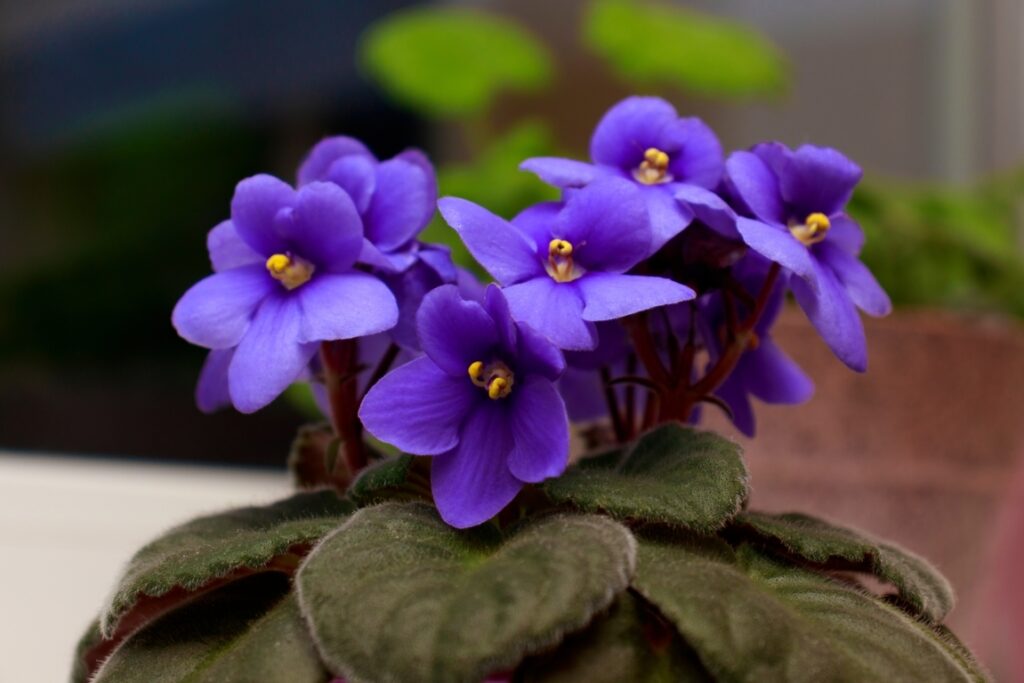
There are a gazillion plant varieties that you can grow in a pot, but nothing strikes a stylish, tropical vibe like a Monstera.
Haven’t you wished once in your life to see a chic Monstera plant grower bigger and bolder in front of your eyes? Bet you have. What’s holding you back? Is it that you’ve no clue what the best pot size for monstera is? Worry not, this Monstera pot size guide is for you.
In this guide, we’ll discuss the best pot sizes for Monstera plants and what factors to consider when choosing their containers.
Let’s dive right in!
The Two Most Popular Monstera Plants
The two most popular Monstera plants are:
- Monstera deliciosa.
- Monstera adansonii.
Both plants have large, glossy leaves with distinctive holes or slits. They’re quite popular for their easy maintenance and lush foliage. But do you know which one is right for your home?
Monstera deliciosa can grow to a much larger size than Monstera adansonii. So if you’re looking for a bigger, more impressive plant then deliciosa is your best choice.
Getting a Monstera Deliciosa – Here’s What You Need to Know

Monstera deliciosa, also known as the swiss cheese plant or split-leaf philodendron, is a popular houseplant native to Central and South America. It is known for its large, glossy leaves that have natural splits or holes in them, which give it its common name. The leaves are typically green, but some varieties may have variegated foliage with white or yellow markings.
What size pot for a monstera deliciosa is right?

Choosing the right Monstera deliciosa pot size isn’t difficult, the rule of thumb is to choose a pot that’s two or three inches bigger than the root ball. This allows plenty of room for growth and prevents overcrowding.
A 10-inch pot should be suitable for younger plants, while more mature specimens may require a 12- or 14-inch pot. Keep in mind that Monstera deliciosa loves to climb, so the taller the pot the better.
Material:
When it comes to material, go with terracotta or plastic, with a drainage hole at the bottom. Avoid glazed ceramic pots as they can trap too much moisture and cause root rot. If you’re using a plastic pot, make sure there’s adequate drainage.
Light requirements:
It’s also important to note that Monstera deliciosa needs a lot of light and humidity, so you’ll need to choose a pot that allows adequate air circulation. You can also add some sphagnum moss at the bottom of the pot for additional drainage.
Using a moss pole (Optional):
As Monstera deliciosa is an epiphyte, you can use a moss pole to encourage its aerial roots to wrap around the support and climb upwards. If you’re going this route, choose a larger pot with more space for the plant to grow. Preferably, a 14″ pot.
Soil type:
In terms of soil, Monstera deliciosa likes a slightly acidic mix. A quality potting soil with perlite or vermiculite is the best option for this plant. Alternatively, you can use a peat-based ‘jungle mix’ designed specifically for epiphytes.
The bottom line:
When it comes to choosing the right pot size for Monstera deliciosa, the rule is ‘the bigger, the better’. It’s also important to choose a material with adequate drainage and air circulation, so your plant can thrive. With just a few simple steps you can create an ideal home for this magnificent houseplant.
Getting a Monstera Adansonii – Here’s What You Need to Know

Monstera adansonii is a smaller, more delicate plant than its bigger cousin Monstera deliciosa. It is known for its beautiful and interesting leaf pattern, with small holes or slits in the leaves instead of larger ones like Monstera deliciosa has. Unlike Monstera deliciosa, which can grow to large sizes over time, Monstera adansonii is a much smaller plant.
What size pot for a Mmonstera adansonii is right?
When choosing a Monstera adansonii pot size, it’s important to keep in mind that this plant prefers having its root system contained. The best way to contain the roots of your Monstera adansonii is by using a pot with drainage holes at the bottom.
The ideal pot size for Monstera adansonii is a 6-10 inch diameter container. This will give your plant plenty of room to grow without becoming root bound, while also maintaining an attractive shape and size. You can also opt for a slightly larger pot as well, but it’s best not to make it too large or your Monstera adansonii may become root bound.
Soil type:
In addition to the pot size, you’ll also want to consider the type of soil you use when planting your Monstera adansonii. It’s best to stick with a light, well-draining soil such as a cactus mix or a mixture of soil and perlite.
Watering requirements:
When it comes to watering, Monstera adansonii prefers its soil to remain slightly moist but not overly saturated. It’s best to water your plant when the top inch of soil is dry and avoid overwatering which can cause root rot.
Light requirements:
Monstera adansonii prefers bright, indirect light. It can also tolerate low light conditions but will not grow as quickly in these situations.
Material:
Monstera adansonii thrives well in terracotta, ceramic or plastic pots. Avoid using metal pots as they can cause the soil to become too hot and dry out quickly.
The bottom line:
They don’t need bigger pots like Monstera deliciosa since they are smaller and delicate. A 6-10 inch diameter container is ideal for Monstera adansonii as this will give your plant plenty of room to grow without becoming root bound, while also maintaining an attractive shape and size.
Why is it Tricky to Find the Right Pot Size for a Monstera Plant?
When growing a Monstera, one of the trickiest things to figure out is what size pot they should be placed in. After all, Monsteras can grow quickly and are known for their aerial roots that need plenty of support. The wrong sized pot could mean stunted growth, root health issues, or even death for your Monstera plant.
The right pot size for a Monstera depends on several factors, such as:
The variety of Monstera:
The larger the variety of Monstera, the larger pot it will need. For example, a Monstera deliciosa will require a larger pot than a smaller variety like a Monstera adansonii.
The age and size of your plant:
If you are starting out with a small cutting or even an established houseplant, you may want to start with a smaller pot. As the plant grows and establishes itself, you can gradually move it into larger pots.
The root system:
If your Monstera has a long, established root system that is taking up a lot of space in a pot, then it will likely need to be moved into a bigger one. On the other hand, if the roots are still small and contained, a smaller pot will be fine.
Current growth stage:
If your Monstera is currently in the process of growing and establishing itself, then it will likely need to be moved up into a larger pot. This is because its roots are expanding, and they need more space to stay healthy.
If you take the above factors into account, you’ll know what size pot for Monstera to go with.
How do I Know if I’ve Chosen the Wrong Pot Size for my Monstera Plant?
If you’ve chosen a pot size that is too small for your Monstera, it won’t be able to grow and develop properly. The root system of the plant needs enough room in order to expand and take in nutrients from the soil. You should also make sure that there is adequate drainage so that water can escape from the pot.
Signs that you’ve chosen the wrong Monstera plant pot size include: stunted growth, pale leaves, yellowing leaves or lack of new leaf development.
If you notice any of these signs then it may be time to change your size pot for Monstera.
How to Pick the Right Pot Size When Repotting a Monstera?
Repotting refers to the process of transferring a plant from its current pot to a larger one, usually when it has outgrown its existing container.
What size pot does a Monstera need when repotting is a common question with a simple answer. For most Monsteras, a 12-14 inch pot with drainage holes is an ideal size. When selecting a pot for repotting, make sure it’s not too small or too large for the plant; it should accommodate both the existing root system and allow room for future growth.
If the pot is too big for the plant, excess moisture will stay around the roots and cause them to rot. On the other hand, a repotting Monstera pot size needs to accommodate the plant’s root ball without being too small, which can stunt its growth.
When repotting Monstera plants, use a good quality potting soil mix with plenty of organic matter and drainage. Adding additional drainage material such as perlite, pumice, or gravel is also recommended for better aeration and moisture retention.
After repotting the Monstera plant, make sure to water it thoroughly and keep it in a warm location with bright light.
Conclusion
When selecting a pot size for your Monstera, it is important to consider the current size of the plant. If your Monstera is currently small, you should select a pot that allows for approximately two inches of space from the root ball and soil. Larger Monsteras will require larger pots, as well as additional drainage holes and perlite to ensure proper soil aeration.
We hope this Monstera pot size guide will aid you in finding the perfect pot for your Monstera! For more information on how to care for your Monstera, check out our other articles and resources. Have fun and happy planting!



